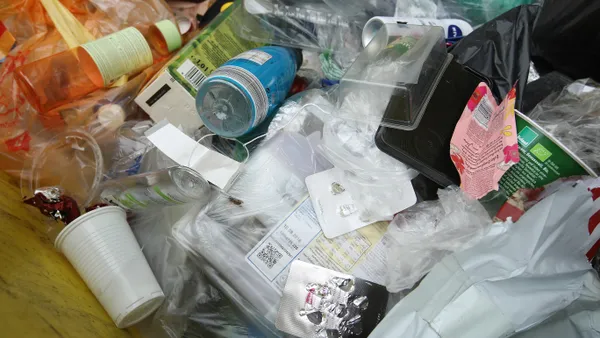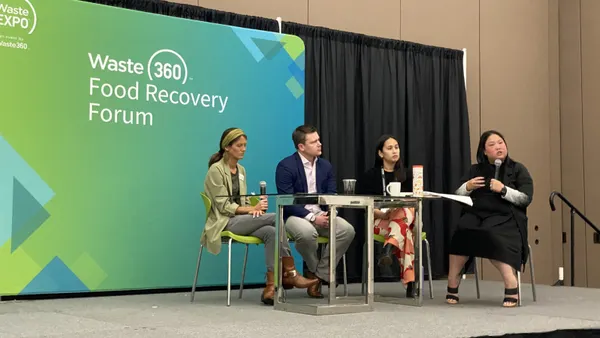Dive Brief:
- At the Our Ocean conference in Malta, the Ocean Conservancy, joined by the Trash Free Seas Alliance, Closed Loop Partners, PepsiCo, 3M, Procter & Gamble, the American Chemistry Council, and the World Plastics Council announced a $150 million funding plan to help prevent the flow of plastic waste into the ocean.
- The funding initiative will focus on waste management and recycling solutions in Southeast Asia. According to Susan Ruffo, managing director of international initiatives for the Ocean Conservancy, improving waste management practices in the region could "cut the flow of plastic going in the ocean by half by 2025."
- Closed Loop Partners, which has so far invested in domestic projects, will operate the new funding mechanism. During a recent interview with Waste Dive, the organization's chief investment and financial officer said marine debris is a main focus and the goal is to be "instrumental in stemming that tide."
Dive Insight:
There is enough plastic on the globe for every person alive to have more than 1 metric ton to themselves — and most of that material comes from virgin sources. Due to a myriad of reasons, including high contamination rates, poor waste management practices and the sheer demand for plastic goods, plastic can get lost from the waste stream and become pollution that often finds its way into the ocean. Since nearly half of all marine plastic is believed to enter the ocean from a small number of Southeast Asian countries, it makes strategic and practical sense that this partnership is targeting the region.
Marine debris is a hot topic in the waste industry, especially outside of the U.S. One of the International Solid Waste Association's (ISWA) focuses at the World Congress/WASTECON 2017 in Baltimore was reducing marine litter and closing the loop on waste. ISWA just put out a report on marine litter, saying that the global community is now "at a critical moment in history" when it comes to dealing with marine litter and other environmental issues. This has spurred a wave of policies on plastic packaging and even led some countries to establish harsh punishments for violations.
The issue is also seen as a top priority by environmental advocates and some industry groups in the U.S. due to many domestic signs of marine pollution. For example, tens of millions of pounds of plastic debris enter the Great Lakes each year. A growing number of cleanup efforts, corporate sponsorships and local ordinances have all been created in an effort mitigate the problem. However, none may be as useful as finding ways to make it more profitable to recycle and extract value from plastic rather than toss it in favor of virgin material.









